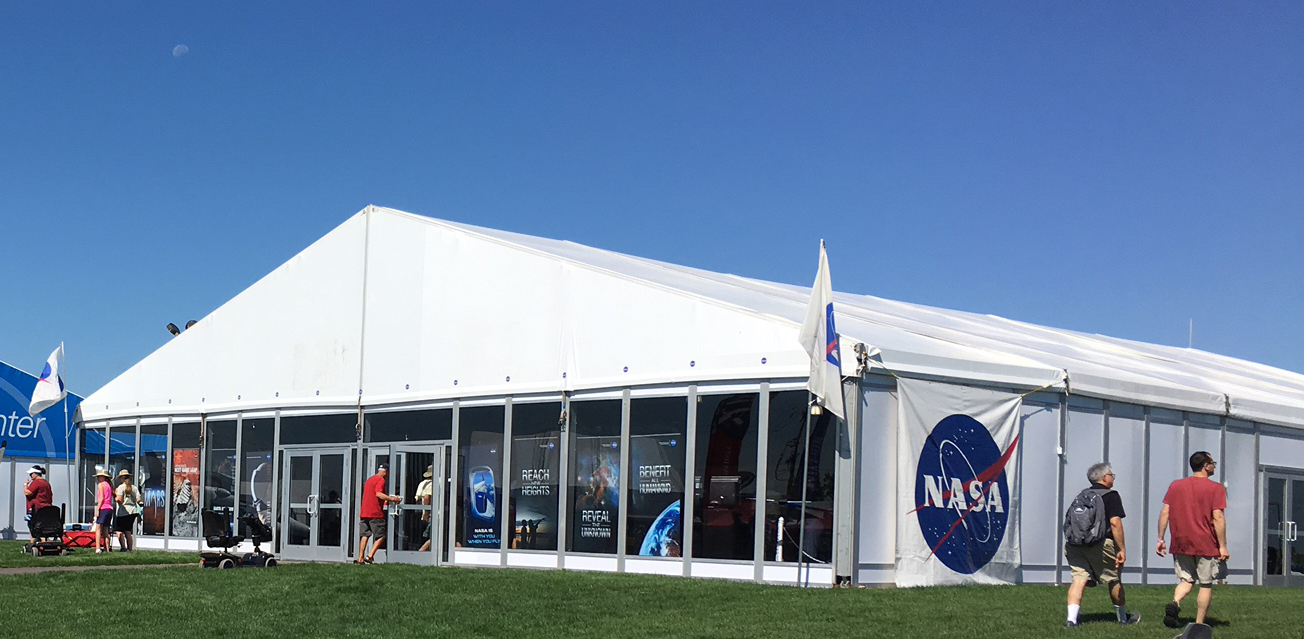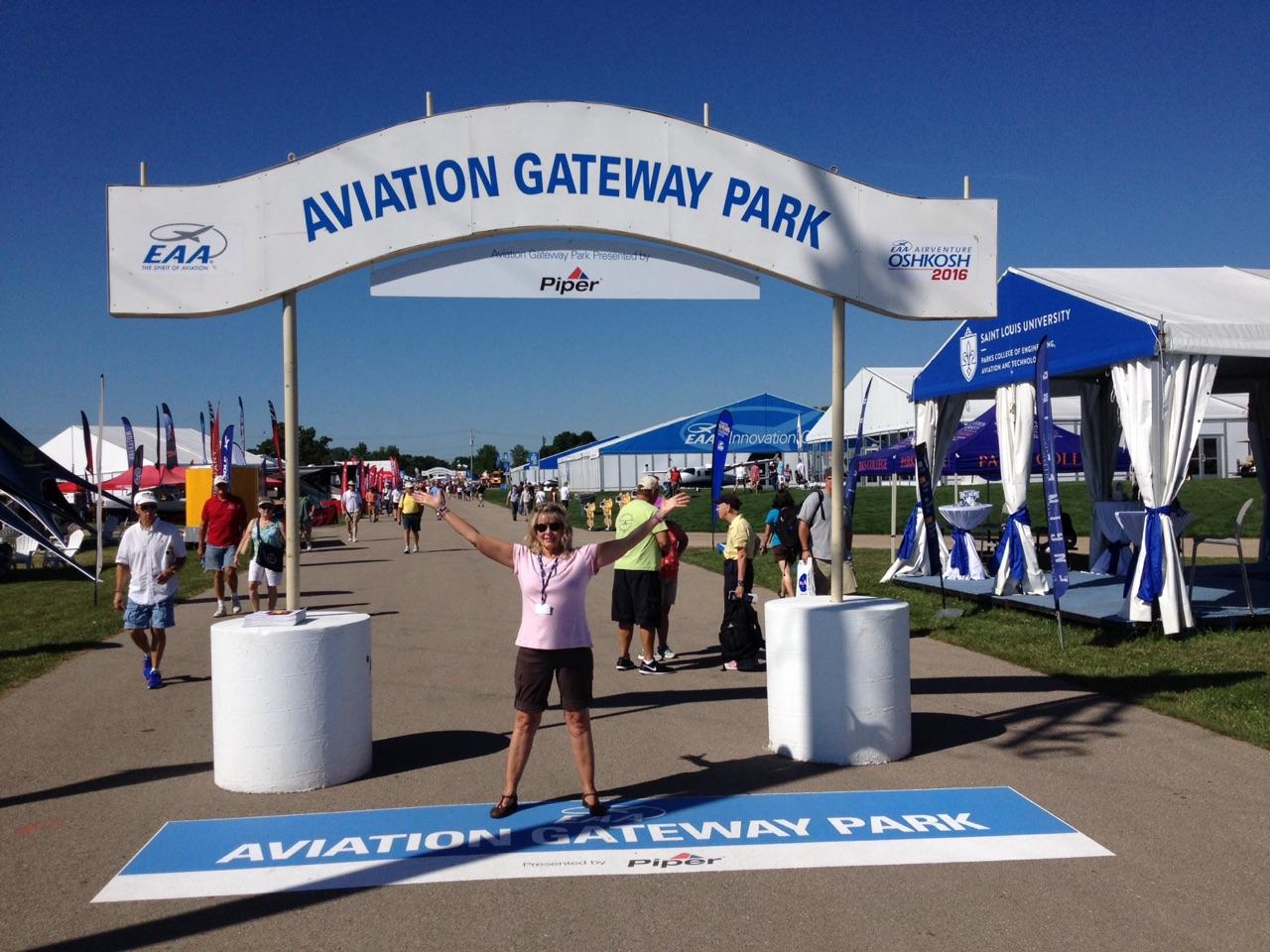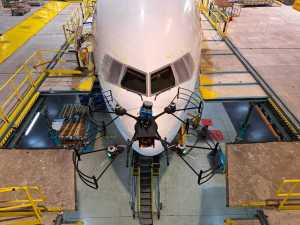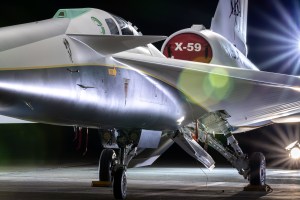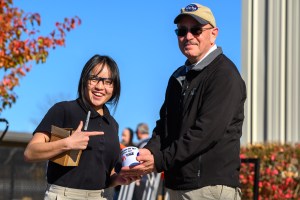From July 24-30, members of the Experimental Aircraft Association (EAA) and other aviation enthusiasts totaling more than 550,000 from more than 80 countries will gather for EAA AirVenture in Oshkosh, Wisconsin to celebrate the past, present and future of flight.
If you are one of those people, for the latest NASA info, follow @NASAaero and @NASAexhibit on Twitter.
NASA will have an entire pavilion of exhibits at Aviation Gateway Park, numerous NASA speakers at AirVenture Forums, and a Theatre in the Woods program on July 27 featuring senior leaders from four NASA research centers talking about X-plane development and traffic management for drones.
Visitors to the Pavilion will find displays and hands-on activities highlighting NASA’s progress on future aircraft, the International Space Station, Earth science, the solar system, and NASA’s plan for sending astronauts into deep space, including Mars. Displays include a moon rock, which can be touched, brought back during NASA’s Apollo missions.
On the flight line, NASA static aircraft displays will include a NASA T-38 Talon aircraft – use for astronaut training — a NASA SR22 research aircraft, and a former National Advisory Committee for Aeronautics (NACA) P-63 aircraft.
On Thursday, July 27 from 7 to 8pm CDT in AirVenture’s Theater in the Woods, NASA Acting Chief Technologist Douglas Terrier will moderate “New Aviation Horizons: Ready for Flight.” The interactive panel includes Dr. Tom Edwards, deputy center director for NASA’s Ames Research Center; David McBride, center director for NASA’s Armstrong Flight Research Center; Dr. Janet Kavandi, center director for NASA’s Langley Research Center; and Dr. Dave Bowles, center director for NASA’s Glenn Research Center. They’ll talk with the audience about their latest work on technologies involved with experimental, or “X,”-planes (low boom supersonic and ultra-efficient subsonic) and with testing traffic management systems for drones, followed by audience Q&A.
More than 20 NASA subject matter experts will lead or take part in EAA AirVenture Forum presentations taking place throughout the venue.
MONDAY, JULY 24
NASA X-57 Electric Aircraft Update
10:00-11:15 AM CDT
Forum Stage 11
Presenter: Sean Clarke
NASA’s X-57 is an experimental aircraft designed to demonstrate radically improved aircraft efficiency with a 3.5 times aero-propulsive efficiency gain in cruise flight. These gains are enabled by a new, optimized wing and electric propulsion.
Hybrid Electric Aircraft Propulsion
10:00–11:15 AM CDT
Forum Stage 10
Presenter: Dr. Rodger Dyson
The next frontier in both large and small aircraft is electrically enhanced propulsion. NASA is developing a new class of power, propulsion, airframe, and thermal technologies that enable quieter, cleaner, and more efficient aircraft that can support new flight applications such as on-demand mobility, regional airport utilization, and enable efficient large transport vehicles. This presentation will provide an overview of how this technology will affect the future of air travel.
NASA Langley 100 Years: Airplanes
11:30 AM–12:45 PM CDT
Hilton Theater
Presenter: Sid Siddiqi
NASA’s Langley Research Center turned 100 years old on July 17. Learn about the hundreds of aircraft made possible over the years by research conducted at the center’s valuable suite of wind tunnels.
2017 Eclipse Through NASA Eyes
11:30 AM–12:45 PM CDT
Forum Stage 11
Presenter: Kristen Erickson
A solar eclipse occurs when the moon blocks any part of the Sun. For the first time in 99 years, on Monday, Aug. 21, 2017, a total solar eclipse will occur across all of North America. Anyone within a 60-70-mile path from Oregon to South Carolina will be in the moon’s shadow for up to 2 minutes 41 seconds. NASA will use air and ground assets to show the eclipse as it moves across the country.
The Bell X-1 and NACA, 1946–1958
11:30 AM–12:45 PM CDT
Skyscape Theater
Presenter: Cam Martin
The Bell X-1 rocket-powered research aircraft “Glamorous Glennis” piloted by Capt. Yeager is best known for making first supersonic flight, 60 years ago October 14, 1947. The bullet-shaped X-1, built by Bell Aircraft Co., Buffalo, N.Y. for the U.S. Army Air Forces and the National Advisory Committee for Aeronautics (NACA), was the first in a successful series of experimental “X-Planes”. In all, five versions of the X-1 flew at the NACA High-Speed Flight Research Station, Edwards, CA from 1946 to 1958.
TUESDAY, JULY 25
Aviators as Citizen Scientists
1:00–2:15 PM CDT
Forum Stage 1
Presenter: Rafat Ansari
General aviation pilots can participate in a citizen science initiative. Aerial remote sensing conducted by volunteer pilots acting as citizen scientists is providing high-quality data to help understand reasons behind outbreaks of toxic algal blooms in nation’s waterways and coastlines. The toxic water can be detrimental to national economy, human health, clean drinking water, fishing industry, and water sports. We will show how pilots can contribute to this citizen science initiative.
NASA Quiet Supersonic X-Plane Tests
2:30–3:45 PM CDT
Forum Stage 4
Presenter: Ray Castner
Currently passengers can only dream of supersonic flight, a key element of NASA research. The Quiet Supersonic Technology (QueSST) vehicle will provide key data for future quiet supersonic flight over land. QueSST was tested in the NASA 8- by 6-foot Supersonic Wind Tunnel. Details will be provided on wind tunnel history, QueSST wind tunnel model challenges and key test results; providing a behind-the-scenes glimpse of a large wind tunnel test at one of NASA’s historical facilities.
WEDNESDAY, JULY 26
NASAs Earth Expeditions
8:30–9:45 AM CDT
Aviation Gateway Park
Presenter: Susan Bell
With aircraft ranging from a DC-8 airborne laboratory to the high-altitude ER-2, and joined by research ships and Earth-observing satellites, NASA has scientists in the field studying everything from the edge of the Greenland ice sheet to the coral of the Great Barrier Reef. Learn about this world tour of science featuring stories from the field, specialized aircraft and the impacts of NASA’s research on your home planet.
UAS Integration into NAS
10:00–11:15 AM CDT
Aviation Gateway Park
Presenter: Heather Maliska
With civil and commercial markets poised to take advantage of the capabilities Unmanned Aircraft Systems (UAS), or drones, have to offer, there is a need to overcome barriers of integrating UAS in the national airspace system (NAS). Hear about what NASA is doing to support research, simulation, flight tests and validation of technologies that can help safely integrate drones into the NAS.
THURSDAY, JULY 27
Flying as a NASA Research Pilot
8:30–9:45 AM CDT
Forum Stage 1
Presenter: Paul Newton
Pilot Paul Newton talks about his experiences flying a wide range of experimental research and scientific sensor platform programs on aircraft ranging from the T34C, F18 and F-15 to the Gulfstream III and Boeing 747.
The Journey to Mars is Underway
10:00–11:15 AM CDT
Theater in the Woods
Moderator: Marcia Lindstrom, Strategic Communications Team for NASA’s Space Launch System.
Panel: Charlie Precourt, four-time space shuttle astronaut Tony Castilleja, Business Development, Boeing’s Space Exploration Division, Jeremy Redden, Integrated Test Chief Engineer, SLS Booster Qualification tests, Sheila Sharp, Boeing Launch Vehicle Integration team
NASA is inspiring a nation through deep space exploration. Right now we are building the launch vehicle and spacecraft that will take humans to new deep space destinations – to an asteroid, the moon and even Mars. If you want to learn more about America’s new Space Launch System and Orion spacecraft don’t miss this “talk show” forum with industry leaders and a former NASA astronaut.
Hidden Figures: The Hidden Story
11:30 AM–12:45 PM CDT
Skyscape Theater
Presenter: Bill Barry
What is a human computer and what did they do? Why were African American women doing the key calculations for NASA in the segregated South in the early 1960s? Did John Glenn really ask “the girl” to “check the numbers?” Learn the answers to these questions and NASA’s involvement in the blockbuster movie Hidden Figures.
Women in Space: Redefining Glamour
2:30 PM – 3:45 PM CDT
Aviation Gateway Park
Moderator: Sandy Coleman, Staff Vice President of NASA Programs for Orbital ATK Washington Operations.
Panel: Janet Kavandi, Ph.D., three-time space shuttle astronaut Shyla Quinn, project engineer for Orbital ATK. Sheila Sharp, Boeing Launch Vehicle Integration team, Michelle Butzke, Lockheed Martin, NASA’s Orion Program
Meet the women of today’s space programs, including a former NASA astronaut, who are redefining glamour through the exciting, compelling work they are performing expanding our universe, opening our world – building tomorrow’s space travel capabilities to make us earth-independent.
NASA New Aviation Horizons: Ready for Flight
7:00–8:00 PM CDT
Theater in the Woods
Presenter: NASA
Theater in the Woods gets underway tonight at 7 pm as the directors of NASA Research Centers at Langley, Ames, Armstrong and Glenn present “New Aviation Horizons – Ready for Flight”.
FRIDAY, JULY 28
NASA Langley 100 Years: Airplanes
8:30–9:45 AM CDT
Forum Stage 8
Presenter: Sid Siddiqi
See July 24 description.
NASA’s Quiet Supersonic Aircraft
11:30 AM–12:45 PM CDT
Forum Stage 2
Presenter: Thomas Jones
The NASA Commercial Supersonic Technology (CST) Project has completed a preliminary design for a Low Boom Flight Demonstration X-plane. The aircraft is designed to generate shock waves that create a soft “thump” rather than the disruptive boom currently associated with supersonic flight. The presentation will summarize the why and how of this project technology, reveal some of the aircraft design features, and discuss the future fabrication of the aircraft.
Salute to Apollo
8:00-10:00 pm CDT
Theater in the Woods
Host: David Hartman
Panel featuring Buzz Aldrin, Jack Borman, Walt Cunningham, Joe Engel, Dick Gordon, Fred Haise, Gene Kranz, Jim Lovell, Jack Schmitt, Al Worden.
SATURDAY, JULY 29
NASA Fostering Commercial Space
10:00–11:15 AM CDT
Aviation Gateway Park
Presenter: Douglas Terrier
Since the dawn of aviation, the government has played a pivotal role in research and technology development that has led to the new knowledge and capabilities that have enabled viable commercial markets, ranging from general to commercial aviation, and beyond. Today, NASA is helping to foster new types of flight, both within and above the atmosphere. As NASA continues to move the exploration needle forward, the agency will continue to transfer new technologies and innovation to U.S. commercial aerospace firms, enabling new horizons for air and space commerce and discovery.
Seeing a Sonic Boom
1:00–2:15 PM CDT
Forum Stage 4
Presenter: Michael Hill
As part of the effort to realize quiet supersonic flight, NASA researchers have been developing technology that allows visualization of sonic boom- causing shockwaves emanating from supersonic aircraft in flight. The presentation will provide an overview of NASA developments in schlieren imaging of supersonic aircraft in flight.
Credits: NASA





























